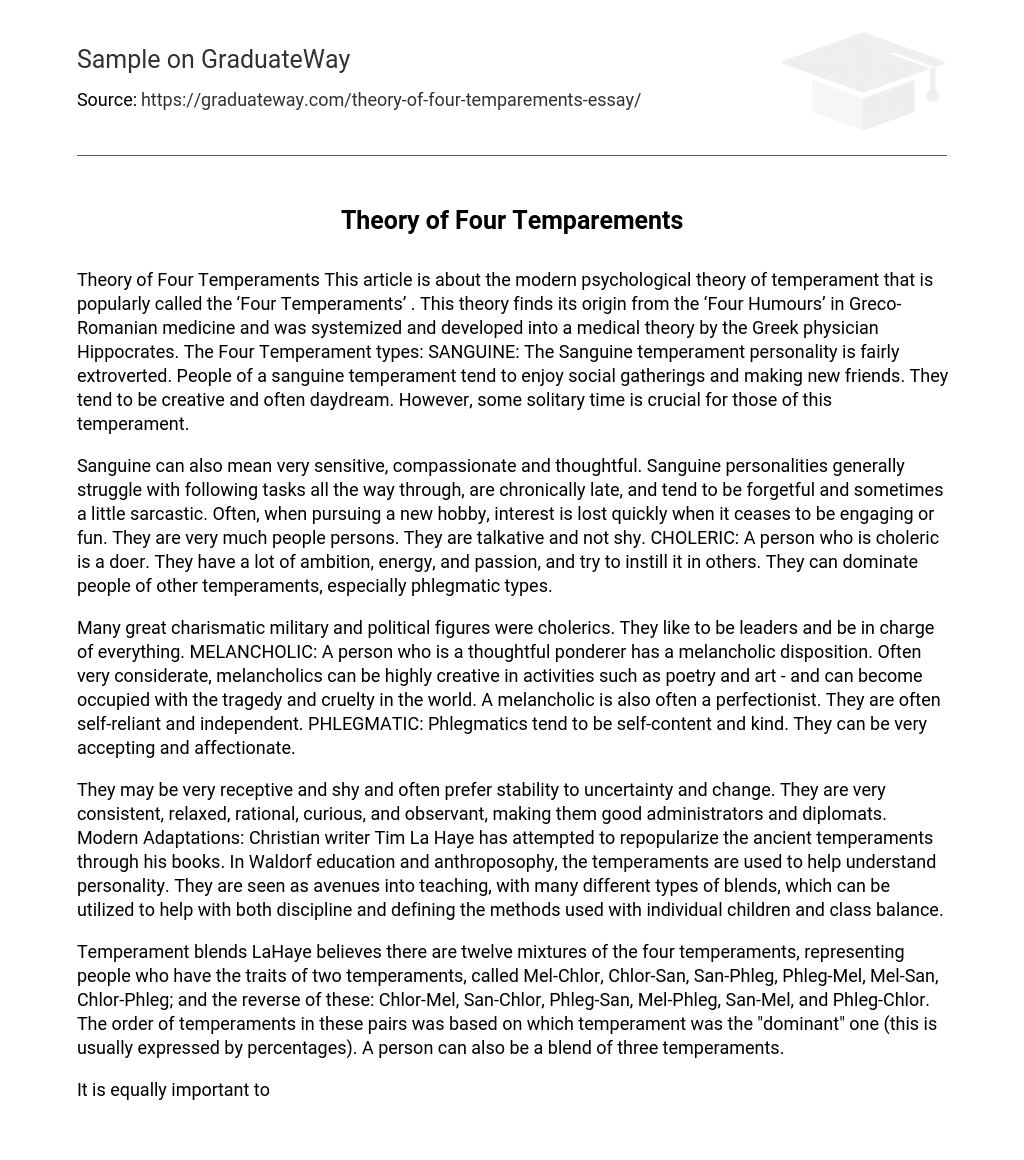Theory of Four Temperaments This article is about the modern psychological theory of temperament that is popularly called the ‘Four Temperaments’ . This theory finds its origin from the ‘Four Humours’ in Greco-Romanian medicine and was systemized and developed into a medical theory by the Greek physician Hippocrates. The Four Temperament types: SANGUINE: The Sanguine temperament personality is fairly extroverted. People of a sanguine temperament tend to enjoy social gatherings and making new friends. They tend to be creative and often daydream. However, some solitary time is crucial for those of this temperament.
Sanguine can also mean very sensitive, compassionate and thoughtful. Sanguine personalities generally struggle with following tasks all the way through, are chronically late, and tend to be forgetful and sometimes a little sarcastic. Often, when pursuing a new hobby, interest is lost quickly when it ceases to be engaging or fun. They are very much people persons. They are talkative and not shy. CHOLERIC: A person who is choleric is a doer. They have a lot of ambition, energy, and passion, and try to instill it in others. They can dominate people of other temperaments, especially phlegmatic types.
Many great charismatic military and political figures were cholerics. They like to be leaders and be in charge of everything. MELANCHOLIC: A person who is a thoughtful ponderer has a melancholic disposition. Often very considerate, melancholics can be highly creative in activities such as poetry and art – and can become occupied with the tragedy and cruelty in the world. A melancholic is also often a perfectionist. They are often self-reliant and independent. PHLEGMATIC: Phlegmatics tend to be self-content and kind. They can be very accepting and affectionate.
They may be very receptive and shy and often prefer stability to uncertainty and change. They are very consistent, relaxed, rational, curious, and observant, making them good administrators and diplomats. Modern Adaptations: Christian writer Tim La Haye has attempted to repopularize the ancient temperaments through his books. In Waldorf education and anthroposophy, the temperaments are used to help understand personality. They are seen as avenues into teaching, with many different types of blends, which can be utilized to help with both discipline and defining the methods used with individual children and class balance.
Temperament blends LaHaye believes there are twelve mixtures of the four temperaments, representing people who have the traits of two temperaments, called Mel-Chlor, Chlor-San, San-Phleg, Phleg-Mel, Mel-San, Chlor-Phleg; and the reverse of these: Chlor-Mel, San-Chlor, Phleg-San, Mel-Phleg, San-Mel, and Phleg-Chlor. The order of temperaments in these pairs was based on which temperament was the “dominant” one (this is usually expressed by percentages). A person can also be a blend of three temperaments.
It is equally important to consider the possibility that the four temperaments may not refer to personality but to mood. The distinction between mood and personality has largely been lost in modern psychology. Sanguine, Choleric, Melancholic and Phlegmatic might equally well refer to the moods of “activity”, “stressful anxiety”, “sadness or depressed” and “calm or placidity”. This interpretation of the four temperaments, allows the medical approach to the four humours to be better understood. Manipulation of the four humours was about changing the way people felt, rather than changing their personality type.





